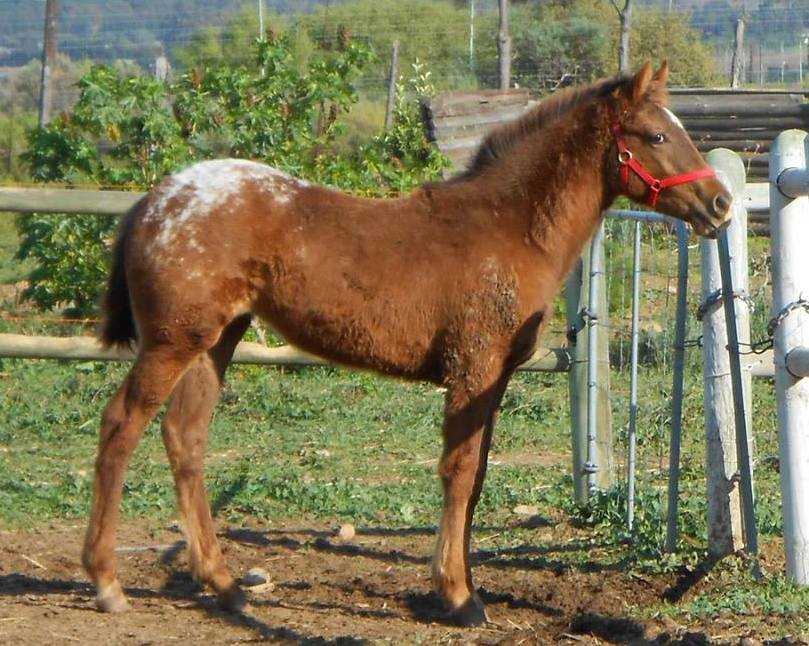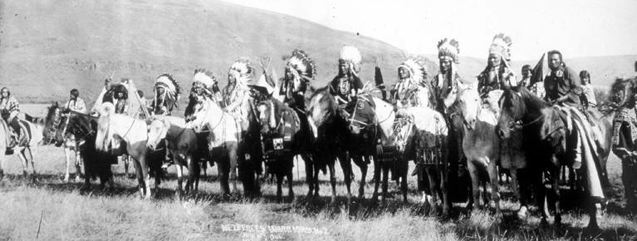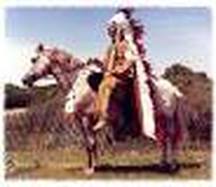History of the Appaloosa breed
|
A horse of many colors
and coat patterns
Many people associate the Appaloosa with the old American West and certain Indian tribes, but their relationship with man dates back to a much earlier time. Spotted horses roamed the earth since before prehistoric times, when man lived in caves during the ice age. Pictures of spotted horses on cave walls can be found in many caves across Europe. Ancient artists painted these pictures as part of special rites, hoping for successful hunts and plentiful food. As long as 20,000 years ago, the artists drew detailed images of spotted horses in caves which are located in France. The Nez Perce The Nez Perce Indians of Washington, Oregon and Idaho became highly sophisticated horsemen in the use of their horses and their mounts were highly prized by other tribes. Unlike most tribes, the Nez Perce carefully selected the spotted horses they intended to breed. Only the best horses were allowed to produce offspring. One of the first white men to visit the Nez Perce was an explorer and horseman, Meriwether Lewis. He described the Appaloosa in his journal dated February 15, 1806: "Their horses appear to be of an excellent race. They are lofty, elegantly formed, and durable." The Nez Perce horses performed tasks according to their value. The most precious horses were ridden during buffalo hunting and war. The war horse needed strength, speed, courage and intelligence. Horses with these qualities and flashy or unusual markings had the most value. Spots helped to camouflage the horse and rider, for the splashy coat patterns helped to break up the horse's outline and made it difficult to see from the distance. The white settlers called the horses "Palouse" horses or "a Palouse horse" as the Nez Perce lived in Palouse country. Eventually the name became Appalousey, and finally, Appaloosa. In the late 1800s, war broke out between the U.S. Calvary and the Nez Perce Indians. The Appaloosa was the reason the U.S. Calvary was deprived of victory for many months, as the Nez Perce fled over 1300 miles of rugged, almost impassible terrain under the guidance of the famed Chief Joseph. The final defeat of the Nez Perce came in Montana where they had to surrender their horses and left them behind, and see the Appaloosas distributed among the settlers. The proud band of carefully selected horses was gone. The Appaloosa Horse Club Nothing was done about these strong willed horses, and the breed was quietly dying out until an article by Dr. Francis Haines was published in 1937 in The Western Horseman titled "The Appaloosa or Palouse Horse." Soon after the release of the article, many people become interested in the breed, and in 1938, farmer and horseman Claude Thompson incorporated the Appaloosa Horse Club for the preservation and improvement of this diminishing breed. The restoration process was slow and the Appaloosa Horse Club grew at a slow pace too. More and more people became interested in the breed, using the Appaloosa as a working horse and for recreational use. The breeders and owners discovered how special this breed was: horses had great colour and markings, a will to work and please, a super disposition, a social personality, and the stamina and intelligence to perform any task they were asked. The breed became very popular and the club and its registry grew to the third largest horse registry in its time. Today the breed has endured many hardships once more. The uncontrolled out-crossing to other breeds, especially the American Quarter Horse, has caused a severe loss in the Appaloosas special conformation, its great disposition, its praised versatility, and most of all, its color. Many Appaloosas today are born solid-coloured and never colour later in life. They don't even display the characteristics that the typical Appaloosa calls its own: white sclera in the eyes (resembling the human eye), partly-colored skin on/around the muzzle or in its soft skin, and vertically striped hooves. |



